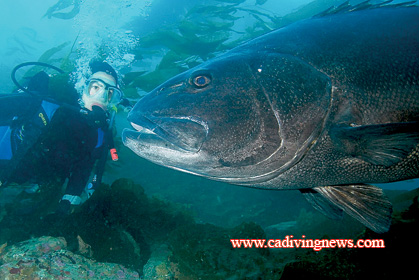Sometimes when I’m out photographing, I think to myself, “I’d have made a really good predator.” When you think about it, that’s exactly what we are when we put a camera in our hands. What we’re hunting for are good photo opportunities. And there are some things you can do to improve your chances of getting a good shot.
SEE WHAT YOUR LENS SEES
If you’re shooting macro, think of small things and don’t be looking for whale sharks. If you’re shooting wide angle, think of vistas rather than gobies. Start visualizing things the way your lens will see it. Yes, it means there are opportunities you can’t shoot. But you’ll likely improve the number of good shots you get by not trying to make the lens do things it’s not good at.
LEARN ANIMAL BEHAVIORS – The more you know about the animals that are your subjects, the better off you’ll be. For instance, I love shooting panamic fanged blennies in the Sea of Cortez. But they’re very skittish. If all I did was chase them around the reef, there’s no way I’m going to get a decent shot. But once I understand the animal’s behavior I can use that to my advantage. For these guys, that means that when you see them in spot X, they may scoot away to spot Y, and then spot Z, but they’ll always come back to X. So you sit and wait. And eventually, you get the shot you want.
PATIENCE IS A VIRTUE
The more patient you are, the better off you’ll be. Black sea bass is another example. When you spot these guys you can either chase after them and get nothing more than a tail shot, or settle down and wait, and their natural curiosity will usually bring them right to you.
UNDERSTAND THE TERRAIN
This sort of goes along with learning the animal’s behavior pattern because you also need to know where they live in order to find them. If you’re looking for moray eels out in the sand, you probably won’t have much luck. If you try to find halibut in cracks and crevices, you’ll also come up empty. So you can either go to the areas where you’re likely to find a critter or know the critters that live in the area you’re exploring.
PICK A SPECIFIC SUBJECT
You can’t shoot everything at the same time. Sometimes, I’ll pick a specific creature and that’s all I’m going to look for on that dive. This doesn’t mean I can’t shoot other animals but I’m going to make one particular one my main goal. A good example of that is the zebra goby. They’re very skittish and not frequently observed because a lot of times, people just don’t look for them. But if you make them your main goal, you’ll likely have better luck because now you’ll be looking in places you’re most likely to find that animal.
THINK LIKE THE ANIMAL
I frequently say to myself, “If I were a _____, where would I be?” I look around and then search in the places where that animal is most likely to be found. It doesn’t mean I always find them, but it does increase my chances of shooting them.
VISUALIZE YOUR SHOT AHEAD OF TIME
Get some idea of how you’d like the picture to look before you pull the trigger. You can do this before you start the dive, or do it once you’ve spotted the animal but before you’ve moved in to take the shot. After a while, this will become second nature to you and something you’ll do on the fly. But if you know what you want the finished shot to look like ahead of time, you can better position yourself as you’re snapping away to get the desired result.
SPECIALIZE
I like to shoot close-up/macro and I also like to shoot animals head-on where they’re looking right at the camera. So I combine the two and try to specialize in that type of image. And the more of those I take, the better I get at it. So pick some type of shot that appeals to you, and then try to find the places and subjects that will allow you to make that kind of image.
Obviously, this article can’t cover all the tips and tricks about how to hunt for better photo ops. But maybe this gets you thinking a bit about what you’re doing and how you’re doing it.
And remember, regardless of your level of expertise, nothing replaces going out and shooting, shooting, shooting, and then looking at what you got to see what worked and what didn’t work. It sounds simple but it’s true. The more you do it, the more you’ll refine your skills and technique, and the better your results will be.










